محتوای صفحه
- 1 Why choose Iran to travel?
- 2 Is it Safe Traveling to Iran? the Real Image of Safety in Iran
- 2.1
- 2.2
- 2.3
- 2.4 How to Get Visa for Traveling to Iran (2019 Guide)
- 2.5
- 2.6 Specifications and requirements for a Tourist visa
- 2.7
- 2.8 The Visa on arrival (VOA) procedure
- 2.9
- 2.10 No stamp on your passport any longer when traveling to Iran
- 2.11
- 2.12 Exceptions to VOA
- 2.13
- 2.14 Procedure to apply at the embassy
- 2.15
- 2.16 United States, United Kingdom and Canada: Conditions to travel to Iran
- 2.17
- 2.18 Israeli citizens willing to travel to Iran
- 2.19
- 2.20 The case of dual Iranian nationality
- 2.21
- 2.22 Visa-free countries
- 3
- 4 Top Experiences You Should Know about Visiting Iran
- 5 How to use Money and Currency in Iran
- 6 How to Buy a Sim Card in Iran? What Are the Best Operators?
- 6.1
- 6.2
- 6.3
- 6.4
- 6.5
- 6.6 Public Transportation in Iran; How to Use It?
- 6.7
- 6.8 Take Taxis in Iran
- 6.9
- 6.10 Use Buses and Subways in Iranian cities
- 6.11
- 6.12 Travel between cities in Iran via Public Transportation: VIP Buses, Train and Savaris
- 6.13
- 6.14 Travel with Domestic Flights in Iran
- 6.15
- 6.16 What to Wear in Iran? A Dress Code Guide for Traveling to Iran
Why choose Iran to travel?
Iran Among the New York Times Best Destination to Visit in 2019
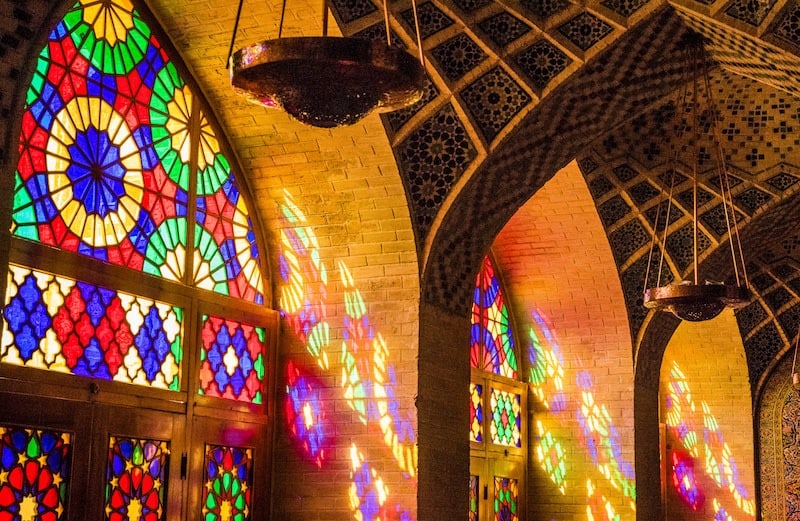
This is one of the most famous and influential travel bucket lists: “The 52 Places to Go in 2019” is the New York Times recommendations for travelers. This year, the respected newspaper has chosen to include Iran among the destinations that should definitely be visited.
While most places of the list are cities or regions, such as Munich or the Puglia, but it’s the whole country that the newspaper invites to discover with Iran. Called a “Middle East jewel”, Iran has indeed many appeals explain the article: from the colorful bazaars to iconic cities, majestic mosques, and pristine nature. With an ancient history, Iran has already 23 UNESCO World Heritage Site.
11 REASONS Why You Should TRAVEL TO IRAN
from Peter Santenello
A unique exhibition at the Museum of Contemporary Art
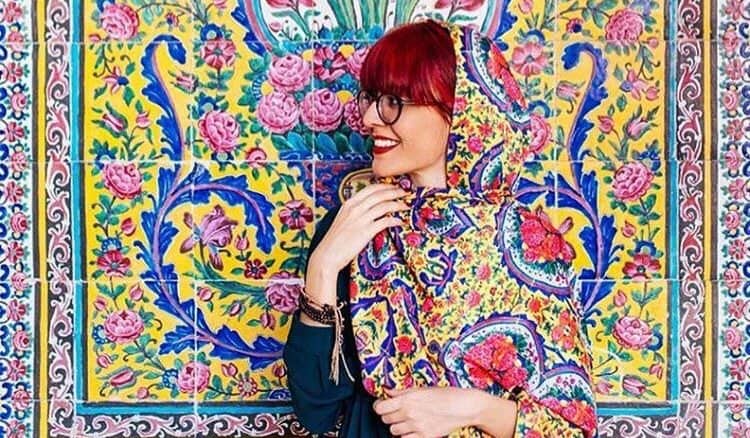
The New York Times also underlines the growing cultural life of Iran, enthusiastic about the major exhibition planned this year, at the Tehran Museum of Contemporary Art. It will be, for sure, an exceptional event for art lovers with a selection of 500 recently discovered pieces by Picasso, Andy Warhol, etc.
Sebastian Modak, the journalist that will visit these 52 places for the New York Times, has also named Iran as the place he is the most excited to visit. He says: “More than any other place on the list, or even in the world, Iran is somewhere that I’ve only ever been able to look at from afar, through the lens of scary newspaper headlines. I’ve found that there’s often a huge gap between the everyday lived experience of people on the ground and the country as we understand it through geopolitics.”
One of the safest country in the world
Choosing to place Iran among the top destinations to visit in 2019, is the sign that despite the tensions with the United States since Trump’s election, Iran remains a gem for travelers ready to experience the unexpected.
As for US citizens, explains the New York Times, even though there are specific visa requirements, it’s absolutely possible to visit Iran, where Americans will be more than welcomed by the population. Furthermore, the country has recently been considered as one of the safest in the world by Travel Risk Map experts. (read this article about Safety in Iran)
How to Visit IRAN? 10 Travel Tips
So, don’t wait any longer and join us to taste unique experiences, and discover the true face of Iran!
Is it Safe Traveling to Iran? the Real Image of Safety in Iran
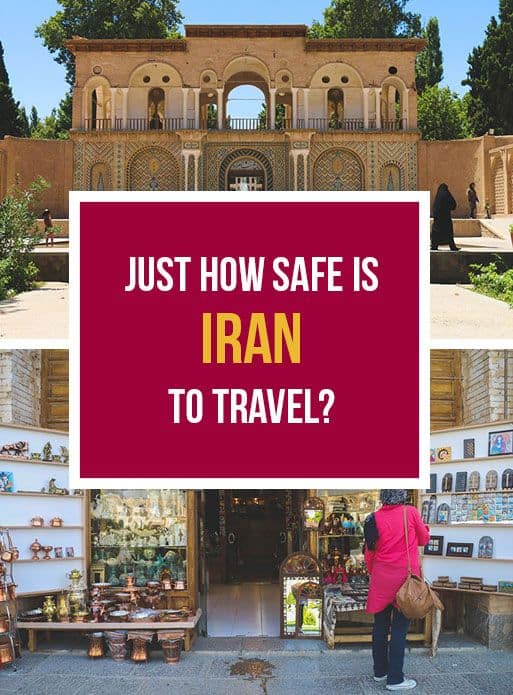
“What? You’re traveling to Iran? Why? It’s dangerous!” are the first things travelers about to set sail hear from their relatives. Dangerous, really? Well, it’s in fact the perfect opposite. Iran has been rated as safe as Sweden, Germany, Australia, and most European countries by the independent experts of “International SOS” in their 2019 Travel Risk Map. This study considers several criteria such as terrorism, unrest, crimes, and point out that risks for travelers in Iran are “Low”.
The country is often depicted as “the safest to travel” by most visitors who experienced it, especially solo female travelers and families, and the Lonely Planet calls its people the “friendliest in the world”. It’s no surprise for those who are familiar with Iranian culture and the great hospitality its people are famous for. Be ready to chat with perfect strangers in the street, be invited for tea or a family meal wherever you go. Actually, Iranians people are often the first reason why people literally fall in love with Iran. So the question is not “Why?” going to Iran, but rather “Why wouldn’t you travel to Iran?”
Iran is a country full of paradoxes. And when it comes to the topic of safety, the paradox is the following: Iran has an unfair reputation among most western media, often linked to the instability of the Middle East, the fear of terrorism. And at the same time, Iran is proclaimed by most travelers and backpackers as one of the safest destinations in the world. So, where is the truth among all this? Without a single doubt, in the second answer.
What makes people claim that Iran is such a safe destination?
First, because Iran is nothing like media depict it. The crimes rate is rather low, especially toward tourists, and nothing in comparison with a city like Paris, which is still the first touristic destination in the world. Most parts of Iran’s majors’ cities like Tehran, Shiraz, Isfahan, are safe to walk in, even at night. Indeed, one of the things that amaze lots of tourists is to see how full of life streets become as soon as the night fall down on the city. Lights everywhere, people walking around, grabbing some food, hanging out with friends or family in the parks.
Secondly, in Iran, you’ll quickly see that tourists are taken care of as precious stones. Iranian people are famous for their hospitality and that may explain why they take so much care of their visitors. Iranians are proud and happy to share their culture and they will gladly do it with you, at the first chance they get. As a matter of fact, it’s almost impossible to get lost in this country, or it won’t last more than two minutes before someone comes to your rescue, to give you the right direction, and most of the time, to accompany you to the door of your hotel, just to be sure you’ve arrived safely. They would also be glad to offer their company, share a meal, show you the beauties of their city. However many experienced tourists have learned to beware of such offers from strangers, in Iran, it’s more than often pure genuine and heartful offers. Despite the deeply rooted hospitality of Iranians people, this behaviour can also be explained by the fact that Iran has just recently been opened to tourism. Foreigners are not that numerous yet and even rare in some parts of the country, which makes locals so happy to exchange with them.
What about traveling in Iran as a female, or solo female, traveler?
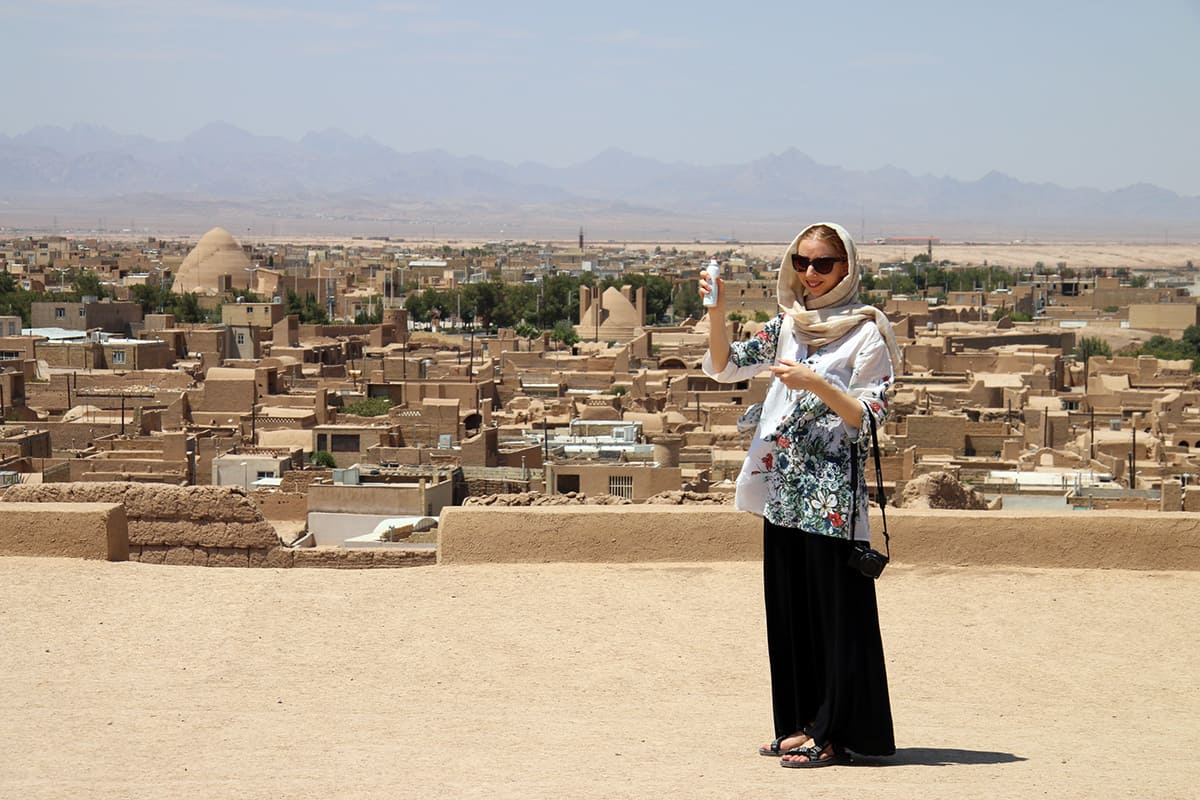
Once again, feedback from women who traveled to Iran are unanimous: Iran is probably one of the safest countries to travel. There is both among men and other women a tendency to protect (sometimes overprotect) women. And for a visitor, it’s comforting to find some help without even asking for it, when for instance, you step out of the bus in an unknown city, early in the morning…
Of course, and also unfortunately, many women know they have to be more cautious than men during their travels. In Iran, where most physical contacts are prohibited in public and most transportation are separated by genders, it somehow provides a sense of safety in the public space. However, the best advice that can be given to any woman is to always follow their instinct and only do what they’re comfortable at.
Finally, what about the money?
Having to carry lots of cash is a source of stress for many tourists who are used to pay by credit card in their countries as well as on most of their travels. Unfortunately, in Iran, the necessary amount of money must be brought in cash. Hopefully, most hotels provide lockers, but the safest option is also to keep it always with you. Most people have those « secret wallets » into which they can fold their money and then carry it close to their body.
Contrary to other major touristic countries and cities, the probability of being robbed of your money in the street is almost none. However, it’s still good to remind tourists that they should always keep an eye on their belongings, especially their money. It’s not because Iran is a safe place that you have to forget about basics safety behaviours.
All this being said, there are probably less to worry about safety in Iran than in most others touristic countries. The traditional Iranian hospitality is probably what makes this country so warm to all the visitors who experienced it. And Iranian are so proud and happy to show that their country has nothing to do with the negative prejudices sometimes spread on media.
Finally, the biggest concern most visitors might have to worry about, could be the extra kilos they’ll bring back from their trip, due to all sweets and delicious meals they have shared with their many encounters during their trip!
How to Get Visa for Traveling to Iran (2019 Guide)
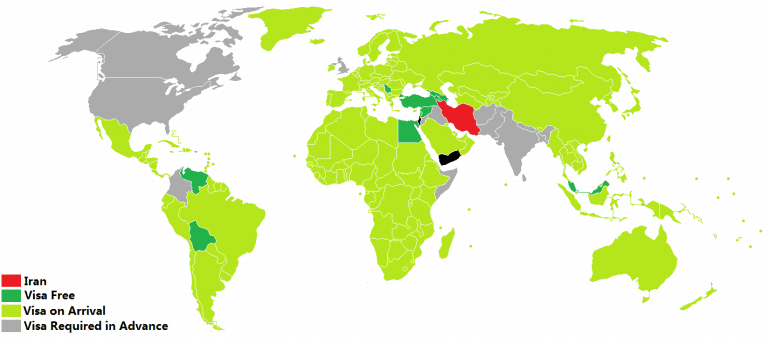
In a little bit more than ten years, the amount of tourists in Iran jumped from 300.000 visitors to six million last years. By 2025, Iran’s goal is to attract 20 million visitors! With this boom in tourism, authorities are doing their best to facilitate and fasten the visa procedure. That’s why getting a visa to travel to Iran has become really easy for most foreign citizens. Here’s everything you need to know to get yours:
Specifications and requirements for a Tourist visa
The Tourist visa is granted for a length of thirty days in most of the cases, sometimes fourteen.
It is required to have at least six months’ validity on your passport to apply. The Tourist visa can, in theory, be extended twice at the Police Offices of Foreign Aliens of biggest cities in Iran.
An insurance is mandatory to travel to Iran. You can either subscribe one before in your country or directly at the airport if you require the Visa on arrival (VOA). Notes that the insurance of your MasterCard or Visa credit card can sometimes cover you. In that case, you simply need to print the insurance notice, mentioning your dates of travel and clearly stating Iran as your destination.
The Visa on arrival (VOA) procedure
Most countries can currently benefit from VOA, which makes the visa application really simple. Only ten countries are excluded from this procedure (see exceptions to VOA below).
While it’s not mandatory, it is highly recommended to first submit an application online, on the dedicated website of the Foreign minister of Iran (http://e_visa.mfa.ir/en ). It is advised to apply a few weeks in advance, even if it’s still possible two days prior to arrival. For the application, you simply need a digital copy of the first page of your passport, a digital personal photo, and the contacts of your first night’s stay. Following the application, you will receive an e-visa authorization number.
Currently, most of Iran’s main airports deliver VOA, among which of course, Tehran’s Imam Khomeini International Airport (IKA). Once at the airport, you simply have to submit your documents along with your e-visa authorization number to the airport’s visa desk. The procedure can take from fifteen minutes to one hour, depending on the airport and the flight.
Here are all the airports in Iran deliver Visa on Arrival:
- Imam Khomeini International Airport, Tehran (IKA)
- Mehrabad International Airport, Tehran (TEH)
- Shahid Dastghaib Airport, Shiraz (SYZ)
- Shahid Hasheminejad International Airport, Mashhad (MHD)
- Shahid Madani Airport, Tabriz (TBZ)
- Shahid Beheshti Airport, Isfahan (ISF)
- Kish International Airport, Kish (KIH)
- Bandar Abbas Airport, Bandar Abbas (BND)
- Shahid Sadooghi Airport, Yazd (AZD)
You’ll have to pay the visa fees, which depend on your nationality. Most of the time the cost is about 75 euros, up to 150 euros, and must be paid in dollars or euros in cash. After these simple formalities, you’re free to pass through the customs and start enjoying your trip to Iran!
Note that if you intend to extend your stay in Iran, it is recommended to apply for a Tourist visa at the embassy rather than opting for the VOA. This latter can be harder to extend and the extension often limited to fourteen more days.
No stamp on your passport any longer when traveling to Iran
Since mid-2018, travelers’ passports are not stamped any longer. It means that once you’ve left Iran, there will be no trace of this travel on your passport. This measure aims to facilitate people to travel to Iran, by avoiding the potential restrictions from a third country.
Exceptions to VOA
VOA is issued for tourism purpose only and thus, to ordinary passports.
Even though, there are some limitations to obtain a VOA, among which:
– Travelers whose visa for Iran have been rejected previously.
– Journalists, diplomatic and official passports, who have to apply for a specific visa.
– Holders of a passport containing an Israeli stamp or visa.
– Other restrictions might affect citizens from Colombia, Somalia, Bangladesh, Jordan, Iraq, Afghanistan, Pakistan and India. Those nationalities are recommended to apply for a Tourist visa at the embassy.
Procedure to apply at the embassy
If you have to apply to the Iranian embassy of your country, please carefully check the requirements according to your nationality.
The Tourist visa delivered at the embassy is valid for three months, and the authorized length of stay in Iran is the same as the VOA, namely one month. The delays to obtain a visa depend on each embassy, but is usually about two weeks.
United States, United Kingdom and Canada: Conditions to travel to Iran
It is mandatory for American citizens, as well as Canadian and British, to be accompanied by an authorized guide during their trip to Iran. Thus, to obtain a visa, citizens from those countries must contact an official tour agency or an official private tour guide to get through the visa procedure.
Israeli citizens willing to travel to Iran
Citizens holding an Israeli passport are currently not allowed to enter Iran.
The case of dual Iranian nationality
Iran does not recognize dual citizenship, so foreign citizens whose mother, father or husband are Iranians, are themselves considered as Iranian. Hence, they must enter the country with their Iranian passport.
Visa-free countries
Armenia, Azerbaijan, Bolivia, Egypt, Georgia, Lebanon, Malaysia, Syria, Turkey, and Venezuela
According to several agreements between Iran and other countries, some nationalities can enter Iran to travel without any visa. The stay varies from fifteen days to three months. It applies to the following countries: Armenia, Azerbaijan, Bolivia, Egypt, Georgia, Lebanon, Malaysia, Syria, Turkey, and Venezuela.
It’s also possible for every citizen to enter one of the Iranian free trade zones (Such as Kish Island, Chabahar, Maku…) without a visa, for a maximum stay of two weeks.
Top Experiences You Should Know about Visiting Iran

Iran has so many wonders to offer the traveler! From the mysterious charm of its ancient sites to its warm-hearted people, Iran is not just a country to visit, but more readily a place to experience! As you’ll start discovering the country, you’ll soon realize that it’s not only one of the safest places to travel, but it also has an endless variety of activities to enjoy. Here are the top experiences you should not miss while traveling to Iran.
All you need to know about traveling to Iran from Annika, a world traveler and art lover
Culture and History Experiences:
1. Meet and live with the people of Iran
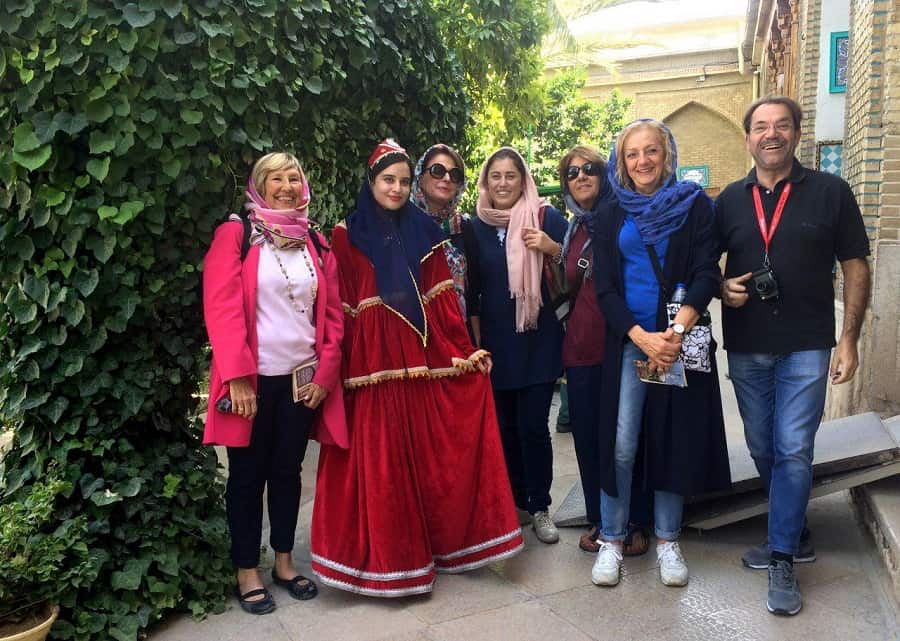
Without a single doubt, the most striking and lasting memories of your trip to Iran will be your encounters with its people. Iranians are undoubtedly among the most hospitable people in the world. They make a point of welcoming travelers as if they were part of the family: wherever you’ll go, people will start chatting with you, being curious about your opinion on their country, eager to offer you a tea, and even invite you over to share a homemade family dinner, in the purest Persian tradition.
2. Explore Isfahan, the jewel of Islamic architecture
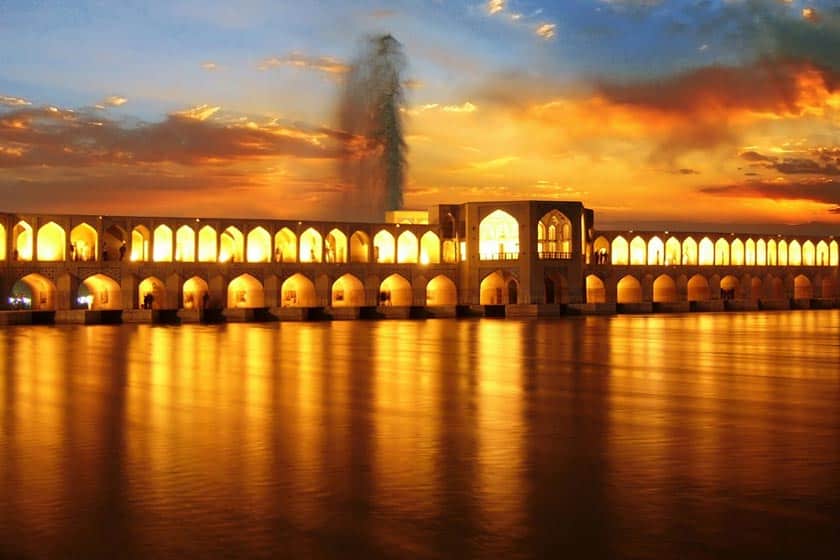
At the first evocation of Iran, the wonders of Isfahan immediately come to mind and it’s not without reasons that the city is known as “half of the world”. One could spend hours on Naghsh-e Jahan square, which gather the most sumptuous buildings of the Islamic world. On one side, the Sheikh Lotfollah Mosque shines with the magnificence of its marble walls and seven-colored tiles. Facing it stands the gorgeous Ali Qapu palace, next to the masterpiece of Iranian architecture: The Masjed-e Shah, with its unique turquoise-tiles dome and spectacular minarets. Wandering into the alleys of the picturesque bazaar, listening to the singers under the arches of one of the many bridges… will feel like time has stood still.
3. Persepolis, Naqsh-e Rustam, and Pasargadae: travel through time in the great Persian Empire
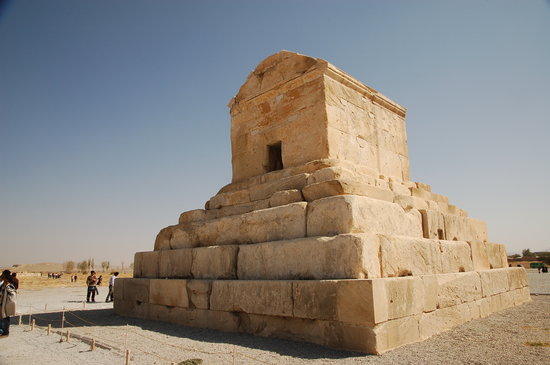
Iran has once been the center of the known world, upon the reign of the Achaemenids who established their capital in Persepolis. There, in the middle of a dry and dusty landscape, raises the Gate of All Nations. In the blink of an eye, you will be transported centuries ago, wandering among the ruins of this once-majestic palace, listening to the stories recounted by the carved bas-reliefs. Go back even further in time in Pasargadae, where Cyrus the Great, the founder of the Persian Empire, lies for the eternity in the quietness of his sepulcher. Do not miss the gigantic Sassanids tombs carved into the stone at Naqsh-e Rustam, a must-see of Persian history.
4. Taste Persian food, so much more than Kebab
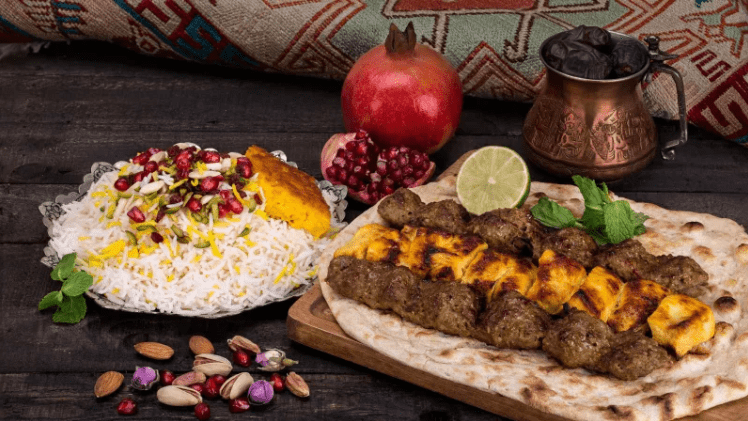
Those who are not familiar with Persian food generally assume it to be limited to barbecue meat, and probably too hot and spicy. It can’t be more wrong! In fact, Persian dishes are numerous, each region having several specialties made from local and diverse ingredients. That’s what makes Iran a perfect destination for foodies! Travel to Shiraz to taste the typical “Kalam Polo”, a rice cooked with fresh herbs and small meatballs; go north to Gilan to enjoy the best-roasted eggplants ever with “Mirza Ghassemi”; or head toward the south to eat a “Ghalyeh Mahi”, a stew cooked with fresh fish directly coming from the Persian Gulf. You’ll soon realize that Persian food is both sophisticated in taste and comforting like mom’s cooking.
5. Live with nomads of Zagros
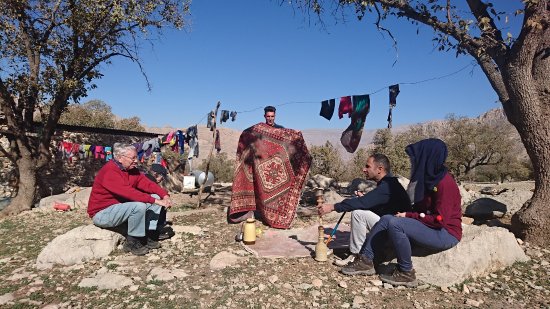
Did you know that Iran has a few dozens of nomadic tribes, from diverse ethnicity? Still nowadays, when comes the first days of spring and autumn, these 1,5 million people travel with their goats and sheep in search of pasture. Visit the Zagros Mountains, just a few hours’ drive from Shiraz, to share the daily life of Qashqai nomads during their migration. It’s an invaluable opportunity to understand nomadic culture and traditions, whose legacy is slowly fading away with modern life. Sharing nomad’s everyday life, you’ll experience a self-sufficient lifestyle, getting water from the river and food from the flocks, as well as packing each morning to go camping each evening in a different environment.
6. Explore Yazd, the fairyland desert city
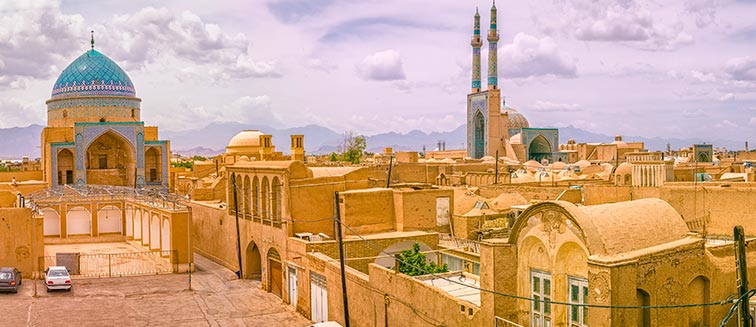
The city of Yazd appears as a pure daydream to the traveler, straight out of the 1001 night’s tales. There is something magical to get lost in the maze of its narrow streets, where shadows and sunlight play hide-and-seek with the visitor. No wonders it’s often the favorite city of travelers. Its amazing wind catchers, the “bâdgir”, spread here and there in the city surely add to its charm. And when the night comes, sitting on one of its many rooftops to admire the lights over the Jameh mosque, will forever stay vivid in your memory.
7. Tehran, an unexpected city to discover
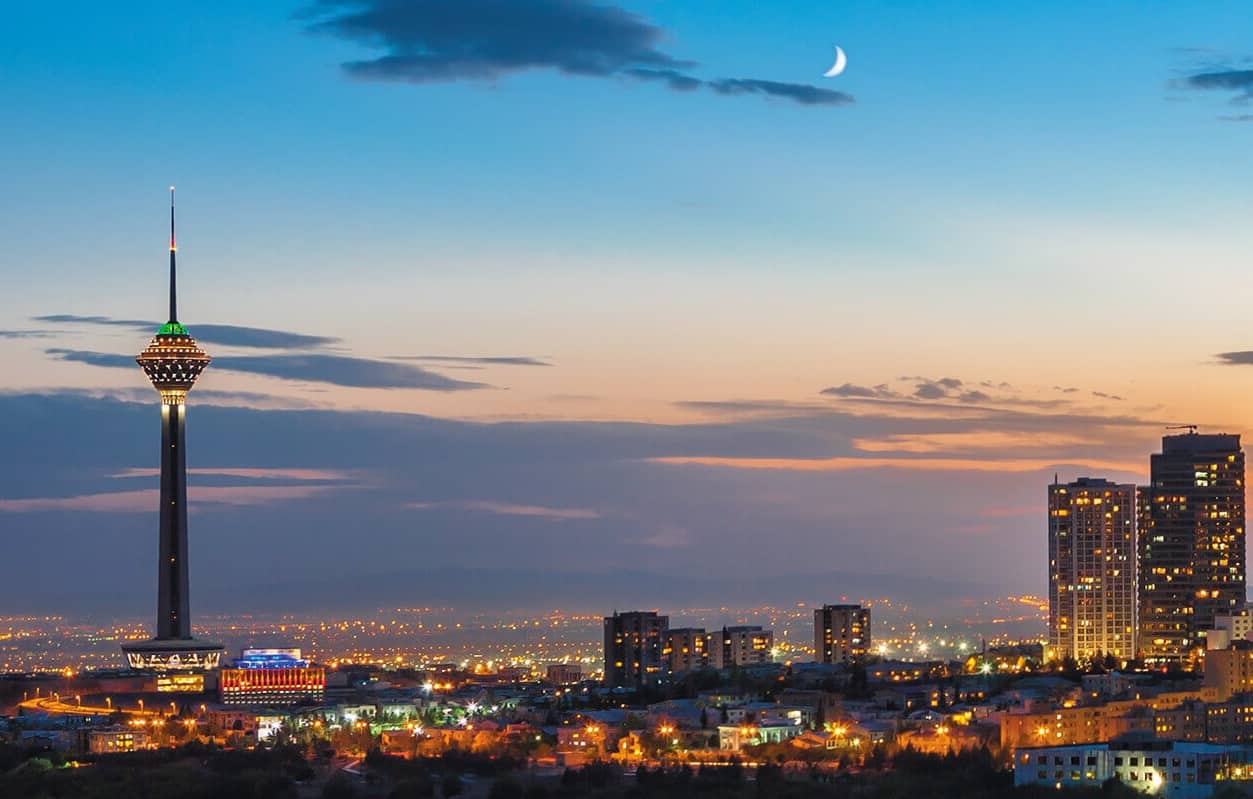
The Iranian capital is often misunderstood by travelers, who skip it too quickly. Tehran has a rich life to discover if you take the time to look behind the curtain. The eight million inhabitants’ city is home to a rich artistic and creative life with many art galleries. Most of the time, you won’t even have to enter a museum to admire the creativity of Iranian artists, whose sculptures and street arts adorn Vali Asr street, the longest avenue of the Middle East. Then, sit down in one of its amazing cafes, whether it’s an intellectual book cafe where young Tehranis reinvent the world or a sophisticated address of the fancy North Tehran. The best way to take the pulse of the city remains to admire it on top of the modern Milad Tower, walking over the graceful Tabiat Bridge, or simply admiring the Azadi Tower, its most famous landmark. Aside from its modern life, discover the old Tehran: Its otherworldly bazaars, paved and narrow streets in which time seems to stand still.
8. Bazaar shopping, the ultimate Iranian experience
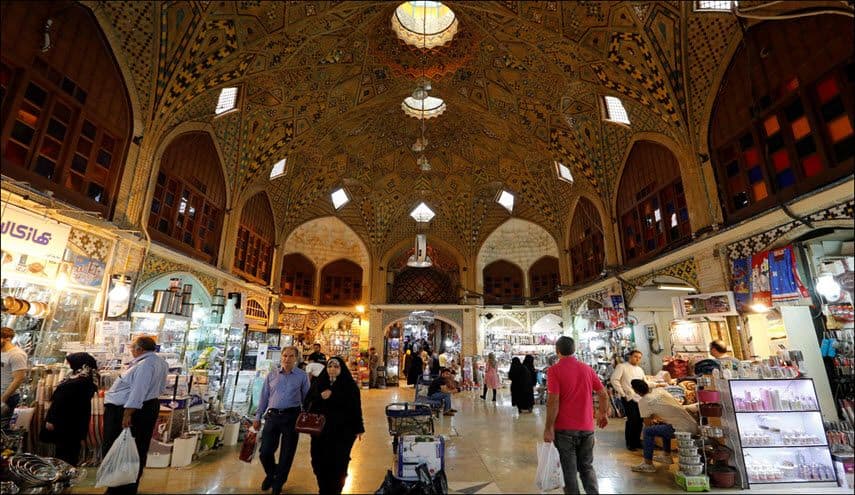
What can better describe Iran than its colorful bazaars? The former Persian Empire, located in the middle of the Silk Road, count many historical bazaars. Nowadays, it’s still the favorite shopping place of most Iranians, as you can find anything. There, you will see ancient jobs and craftsmen practicing their traditional knowledge, on carpets, wood or tiles… The best way to visit is to get lost in these covered lanes, which connect old caravanserais, mosques, and public bath turned into tea-houses. All your senses will be aroused while admiring the mesmerizing architecture of the domed ceilings in Qazvin. Fresh vegetable, local delicacies, and traditional drinks are, as well as all sort of handicrafts, are just there waiting for you to discover them in Isfahan or Shiraz. Not to mention the UNESCO listed bazaar of Tabriz, the largest covered bazaar in the world, or the buzzing Friday bazaar of south Tehran.
9. A guide to the Zoroastrian life and traditions
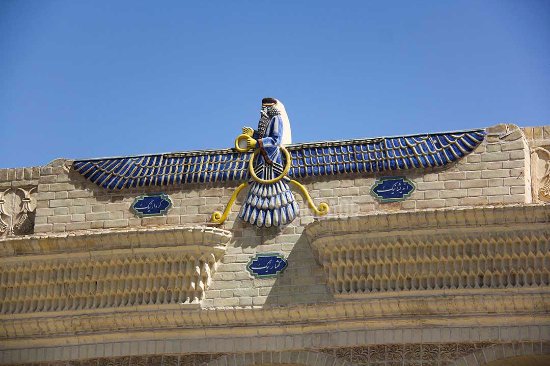
Zoroastrianism is one of the world’s oldest religions, which appeared in Persia way before the Muslim conquest. Nowadays, Iran is still home to many of its followers and host many important sites such as the Fire temples and the Towers of Silence. Most of them can be found in Yazd’s region, such as the village of Chak Chak. Often located in remote areas in nature, they offered stunning views alongside their spiritual and peaceful atmosphere. Learning about the rituals and culture of Zoroastrianism will tell you a lot about Iran, which many of its traditions, such as New Year, are rooted in this ancient religion.
10. Participate in local events and Persian celebrations
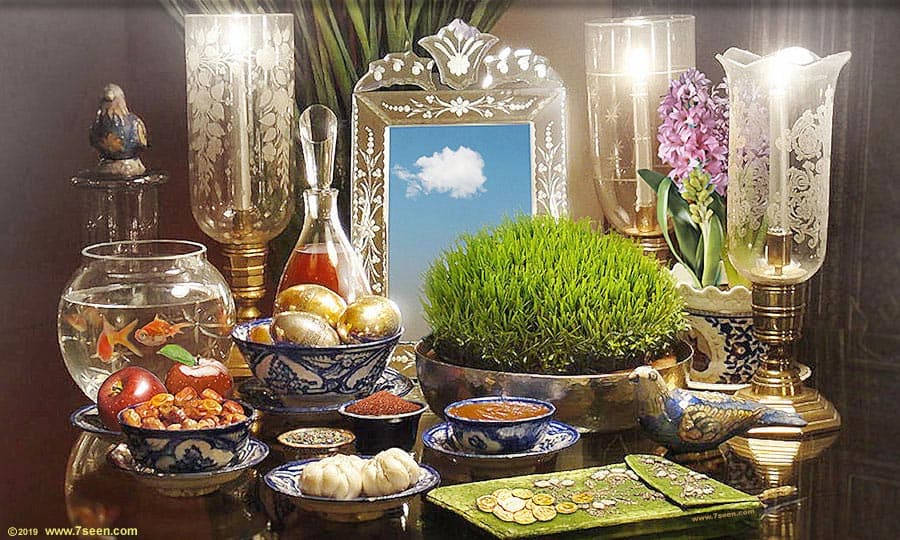
Have you ever heard about the haft sin table? Did you know that saffron is harvested by hands during only a couple of weeks? And that the longest night of the year is accompanied by pomegranates and readings of Hafez’s poetry? All those are traditional and seasonal Persian events, which take place all along the year. According to your date of arrival in Iran, be sure to check the local celebrations and events which take place. During “Nowruz”, in March, you will see the whole country celebrating the New Year according to ancestral traditions rooted in Zoroastrianism. On “Chahar-Shanbe Suri”, the evening before the last Wednesday of the year, join Iranians in the tradition of jumping over a fire. In September, do not miss “Ashura” and “Tasu’a” religious celebrations, during the mourning of Imam Hossein. While those events are nationwide, others are also typically regional, for instance, the rose water festival in May, in Kashan. Taking part in one of them is the guarantee of true insights into the Persian culture and unforgettable memories.
11. Visit Shush and other Unesco-listed sites of Khuzestan, to trace back old civilizations

It doesn’t matter whether you’re a ruins lover or not: the magnificence of those sites are beyond imagination, and they will fascinate even the trendiest visitors. In the arid Khuzestan province, close to its capital city Ahwaz, are three of the most splendid Unesco-listed archeological sites of Iran. First, take a trip back to the third millennium BC to enter the antic city of Susa (Shush), one of the greatest of the ancient Persia. Visit the remains of the Royal City, before heading toward a “masterpiece of creative genius”: the Shushtar Historical Hydraulic System. This amazing piece of engineering is still functional today, sixteen centuries after its construction. Deeper in the hinterland, you will discover the ziggurat of Chogha Zanbil, the world’s best-preserved example of Elamite architecture, whose serene and spiritual atmosphere will captivate you.
12. The picturesque villages of Iran, witnesses of the diverse history and culture of Iran
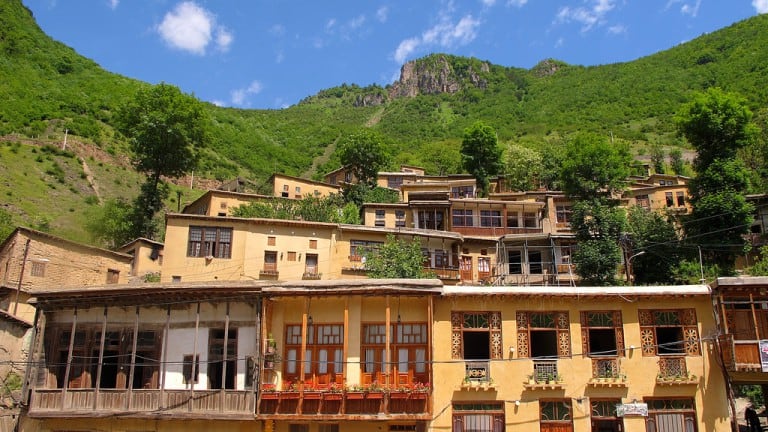
The best places to find tracks of Iran’s diverse cultures and ethnicities lies in its villages. They are the last witnesses of several traditional lifestyles. Masuleh is probably Iran’s most famous village. Located in the Gilan Province, it is known for its roofs forming part of the streets. Located in the heart of a green region, Masuleh is also surrounded by jungles and waterfalls. More on the west, discover the traditional Kurdish village of Palangan or Uraman Takht stair village. Don’t expect to find any souvenirs shops here! On the contrary, this made out of mud-bricks village is the ideal spot to observe the local life of Kurdish people. In its preserved atmosphere, you will see women wearing colorful outfits, observe animals crossing the streets to go to the fields, and discover at nightfall, some traditional Kurdish music. Go southern to find the incredible troglodyte village of Kandovan, in West Azerbaijan near Tabriz. Nested in the cliffs, houses of the village were carved by men in the volcanic rocks and are still inhabited. Tempted by a dive in clear waters? Reach the tiny village of Pamenar and its lake, in Khuzestan, to find yourself in the quietness of an oasis of greens and wildlife.
10 reasons why you should visit Iran now
From Angela Corrias
Nature and Adventure Experiences:
1. Desert and oases, the profound silence experience
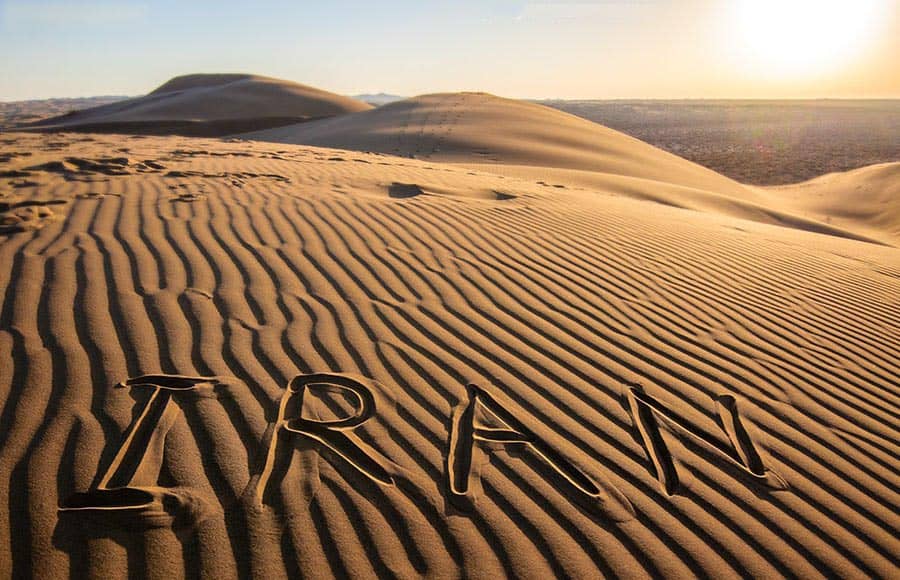
Close your eyes and think about Iran, the former Persian Empire. One of your first vision will certainly include endless sand dunes, palm trees and heavenly sights of oases. You are right, Iran is the land of many deserts, and a perfect destination for golden sand lovers. With thousands of kilometers of sand dunes, you can easily travel to remote and preserved places. Experience staying in a local house, in the wilderness of the Maranjab desert to discover the real deep silence. Imagine the sand dunes at your doorstep, the sun fading at the horizon, and the sky full of bright shining stars. Go exploring salt lakes and camel riding in the Varzaneh desert, near Isfahan. Hold your breath in the Lut desert, to admire the massive and nature-made “sand castles”, sculpted over several meters high. This ruthless desert, a World Heritage Site, is the hottest spot on earth, with a temperature of 70°C measured.
2. Ski on the Alborz Mountains and ride the virgin Persian powder
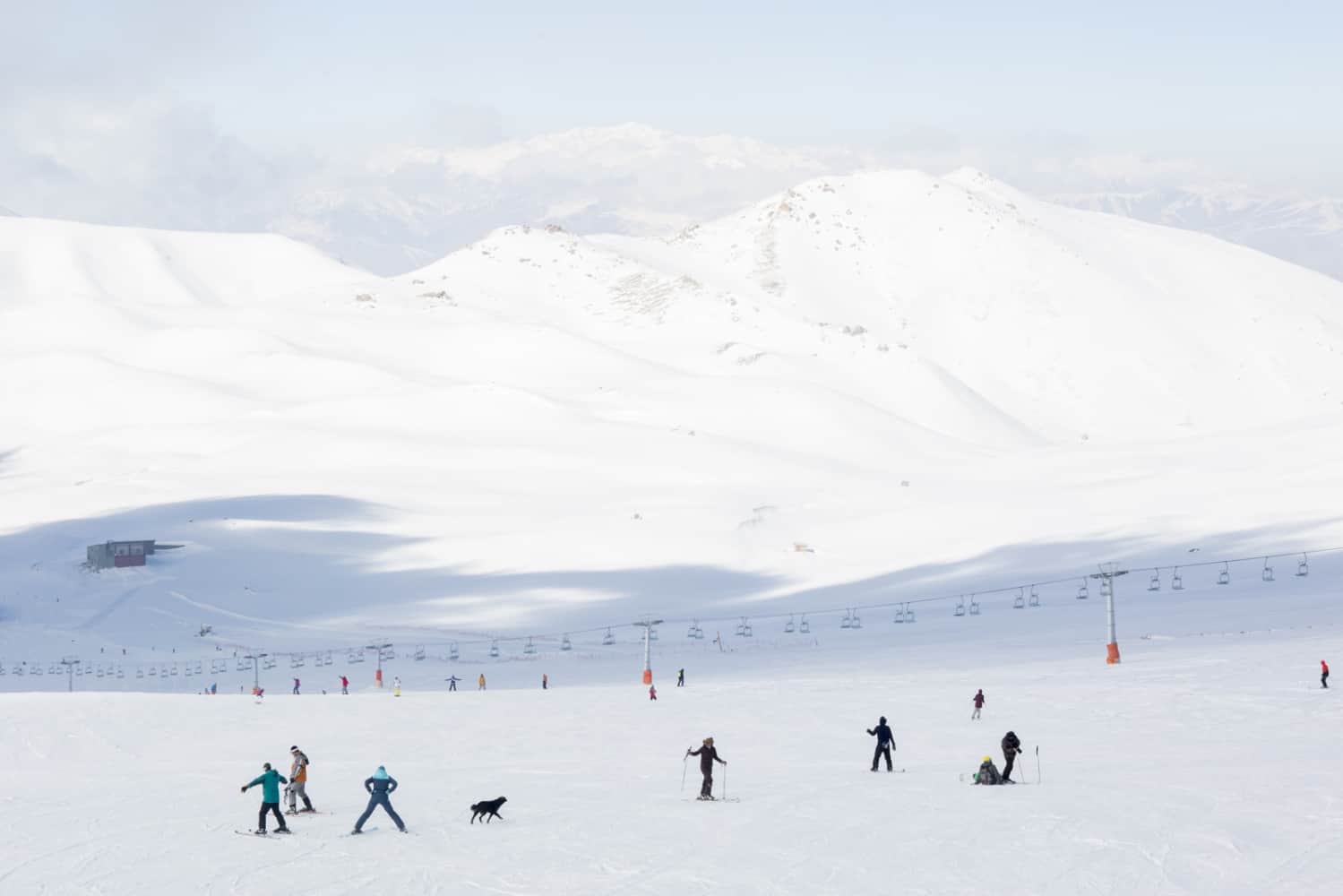
Forget the sand dunes and the merciless sun, to replace it with soft white snow powder. Yes, this is Iran too! Almost one-third of the country is covered with snow during winter, and with a hundred peaks over 4000 m, Iran is a paradise for ski lovers. Ski resorts are numerous, modern and fully equipped. You can travel to the mountains of the west to enjoy the virgin powder, or simply stay in the capital city, which has the highest ski resort of the country, up to 3700 meters, in Tochal. Skiing in Iran is a combination of thrilling sensations: the pleasure of gliding down the tracks on excellent snow conditions while enjoying breathtaking landscapes. To add to the picture, you can imagine yourself enjoying a comforting warm Persian tea to get back on your feet. The ski season lasts between three to five months in Iran, during winter. After that, the mountains become the playground of climbers and hikers…
3. Conquest mount Damavand, the heart of the Alborz mountains range
Iran’s highest and most famous peak, Mount Damavand, stands proudly in the Alborz mountains range as if challenging the mountaineers to adventure themselves and brave the elements. With a height of 5609 meters, mount Damavand is little known outside of Iran. However, it’s nothing less than the highest volcano in Asia and the second most prominent peak in Asia after Mount Everest. But don’t be scared! Along with an experienced guide, climbing this summit can be done rather fast. On this unique trip, dramatic mountainous views are waiting for you, with surreal cloudscapes and immaculate snow spreading over the horizon. The breathtaking beauty and magical atmosphere of the place probably explain why Mount Damavand has always been dear to the heart of Iranians, from Ferdowsi’s time to nowadays. Indeed, according to the story recalls in the “Shahnameh”, it’s on the top of Mount Damavand that the Persian hero Arash sacrificed itself, and threw an arrow which defined the borders of the country.
4. Hiking in the Hyrcanian forests and jungles of the north of Iran
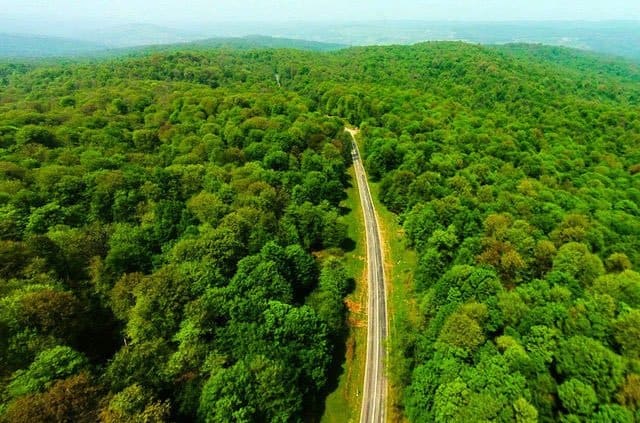
In Iran, nature expresses its beauty in as many ways as conceivable. Travel to the Northern Province to encounter a combination of lush lowlands and mountain forests called the “jungle”. What a contrast with the dry desert of central Iran! And what an experience to go for hiking and trekking in those green oasis, surrounded only by natural beauties. Head toward the Caspian Sea to discover the Hyrcanian forest, one of the oldest forests in the world, listed by the Unesco for its natural beauty and its “masterpieces of nature creative genius”. With a humid climate, this region is home to many diverse and endemic plant species, which makes this area a strategic ecoregion for conservation. It’s also an important resting area for many species of birds that you can observe on their migration from Russia to Africa. A little further on the West is the Gilan region, dearly appreciated by most Iranians. It’s humid and often foggy weather, as well as its luxurious “jungle”, create its unique charm. It’s a perfect playground for nature lovers eager to go on a hike.
5. Rafting on the roaring waves of Iranian’s most famous rivers
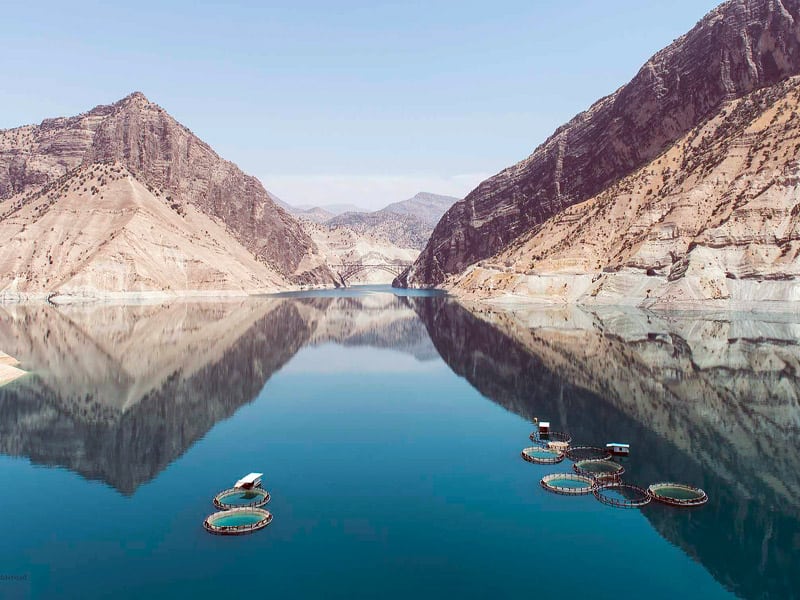
Interested in challenging yourself during your trip to Iran? Looking for unexpected adventures and thrilling sensations? Then step aboard, and experience River rafting! This popular water sport is relatively new in Iran, however, Iranian have used the rivers to move people and loads through the country for a long time. Haraz River, Zayandeh-Rood, Sefi-Rood or Armand River are perfect playgrounds for such experience with their rushing waters and roaring waves. Rafting is not only a fantastic activity which guarantees you exciting memories. It’s also a unique and environmental way to discover natural sceneries, green landscape, and villages while floating down the river.
6. Canyoning in Iran, the adrenaline rush experiences
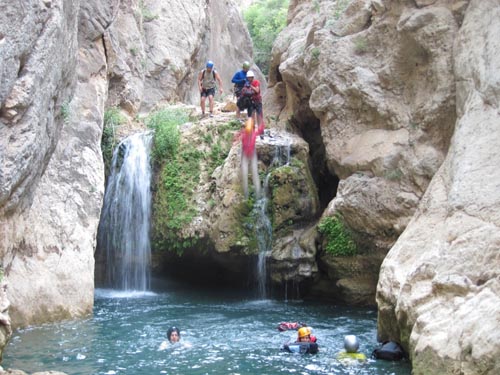
If traveling rhyme with adventures for you, then canyoning in Iran might be the greatest experience of your trip. It’s the best nature can offer, gathered in one single challenging experience. Go hiking and rafting in the green lush jungles of the north. Swim into cold waters and discover impressive waterfalls in the Fars province, central Iran. Explore and climb unbelievable canyons carved by nature for centuries, in the south. Above all, don’t miss the Raqez Canyon, probably the most beautiful canyon in Iran, with its turquoise water and its 64 waterfalls! From the most technical spots to the easiest ones, Iran offers all types of experiences for canyoning. It’s such a boundless playground for adventurers that there is no way you can get enough of it!
7. Explore Hormuz, the rainbow island, and the beautiful Persian Gulf
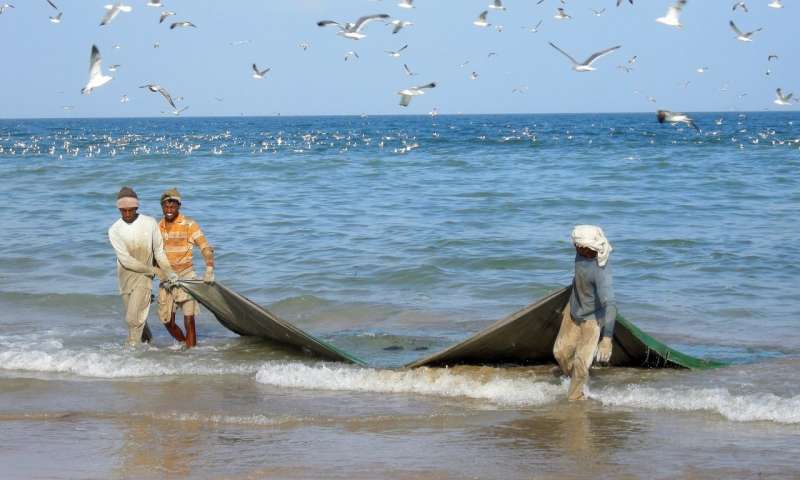
It’s impossible to travel to the south of Iran without falling in love with the stunning beauty of the Persian Gulf coast. Imagine a red sand cost, diving into a deep blue sea, surrounded by dark cliffs… This daydream land is the pearl of the Persian Gulf, and an absolute must-see: Hormuz Island. This remote place, virgin of any urbanization and traffic, can be explored by bike. The roads are red and unpaved. The landscape is a combination of yellow, red, and silver-blue. The neighboring Hengam and Qeshm islands also have astonishing natural landscapes to offer: virgin coast of coral reefs for the first one, unique geological phenomenon for the second. The shaped rocks of the Stars Valley, on Qeshm Island, are a truly unique and a mysterious natural miracle. Alongside these wonders, the Bandari culture with its specific traditions, clothes, and handicrafts, will end up to steal your heart.
8. Stargazing and astronomy, a trip to the sky in the pure Iranian dark night

Iran is a land where men have looked skywards for centuries. From the greats Al-Biruni and Omar Khayyam, two renowned Persian astronomers, to the Persian kings themselves, many tried to pierce the secrets of the stars. Luckily, Iran has remained a destination of choice for travelers who wish to follow the footsteps of these great men and be lost in wonders while looking at the Milky Way. The country counts many remote places with absolutely no light pollution, which makes it perfect for stargazing. Such a dark night can barely be found nowadays in many regions of the world. Enjoying the spectacular night sky, its shooting stars, and meteorites, in the middle of one of Iran’s desert, will create exceptional memories from your trip.
9. Bird-watching experience to observe Iran’s unique avifauna
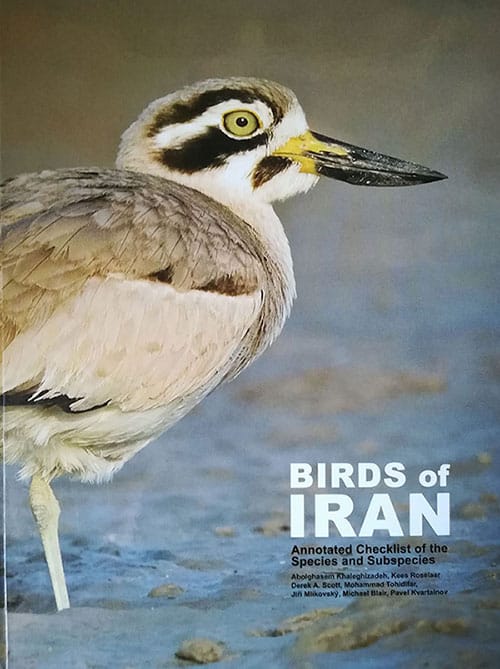
Explore the wildlife of Iran, to open your eyes on the wonders of nature while doing bird watching during your trip. Caspian Tit, Iran Ground Jay, Saxaul Sparrow…: whether you’re an experienced ornithologist or a simple curious traveler, there are plenty of opportunities throughout Iran to get to know some of its bird’s species. From the lagoon of the Miankaleh peninsula in the north to the lakes of the west, and the mangroves of the south, Iran is a migrating spot for many species all along the year. Besides, the country is home to more than hundreds of endemic and rare species. In the Caspian Sea’s island of Ashuradeh, you can thus admire incredibly rich wildlife, full of pheasants, swans, or flamingos… It’s even possible to observe small and colorful birds, in one of the many green parks of Tehran, Iran’s capital city, such as Park-e Shahr! Overall, choosing birdwatching during your trip is an environmental and nature-friendly experience, which will provide you with a better understanding of Iran’s nature.
10. Discover Ali-Sadr water cave with an underground boat trip
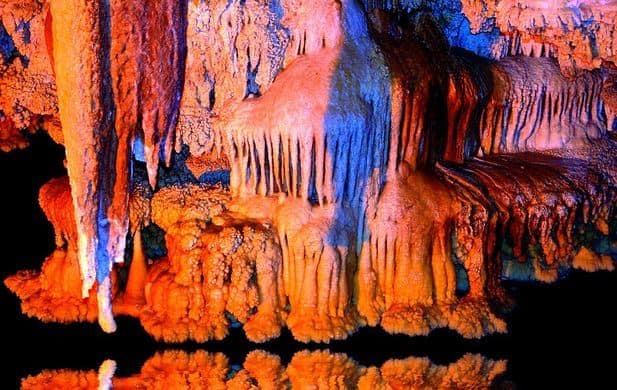
This boat journey is a one-of-a-kind experience! Near the city of Hamedan, in the west of Iran, is the world’s largest underground water complexes. Prehistoric paintings show evidence that the cave was inhabited some 12 000 years ago. Take a sit on a small paddle boat to enter this 11 kilometers maze: you’re about to have one of the longest underground boat trips in the world! In this water-filled subterranean labyrinth, you can admire fantastical rock formations up to 40 meters high: stalactites ceilings over your head, colorful structures covering the tunnel wall and other wonders might take your breath away. Continue by exploring large deep lakes, whose water is so clear and pure that you can see below its surface to a depth of five meters.
11. The Alamut Valley and Castles of Assassins, a mystical paradise for hikers
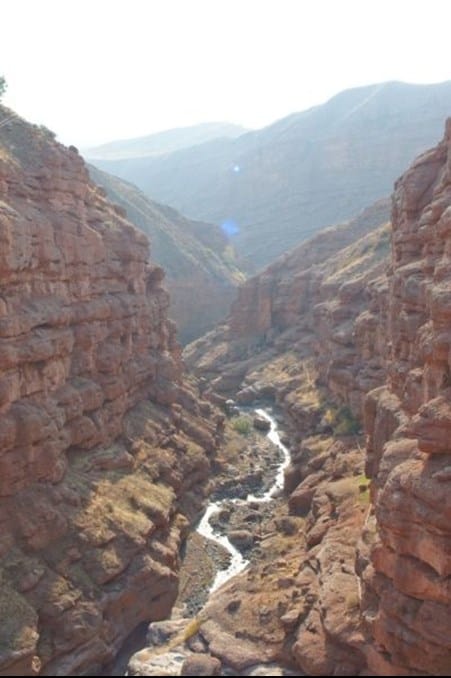
Discover the story of the “assassins” while climbing the mountain fortress of Alamut, in the northwest of Iran. In the green and luxurious valley of Alamut stand the ruins of the legendries Castles of Assassins, an ensemble of remaining of more than 50 military fortresses. Among them, the ruins of the Alamut Castle built in 840 and still overlooking the valley at 2100 meters high. Thought impregnable, the castle was famous for its paradisiacal gardens described by Marco Polo and for the story of its mercenaries. Not only the place is wrapped with this incredible medieval and mystical atmosphere, but it’s also a natural wonder: Its marvelous green valleys, its colorful summits, and incredible canyons are a perfect invitation for hiking.
How to use Money and Currency in Iran
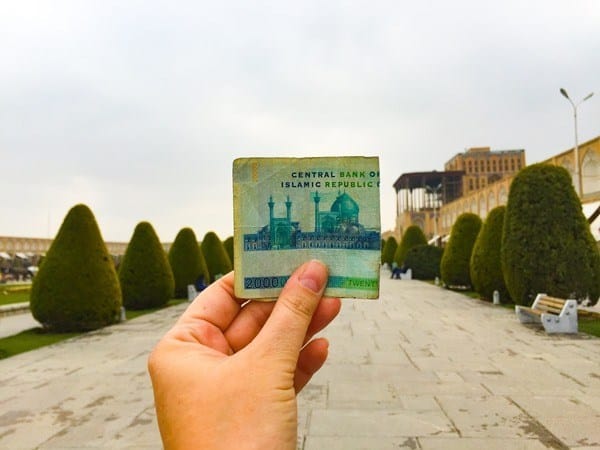
Traveling in Iran involves becoming used to carry batches of banknotes with you! It’s unusual for most foreign tourists who are used to pay everywhere in the world with their credit card. But in Iran, there is no way to avoid it: it’s impossible to use your credit card.
Indeed, Iran’s banking system is not connected to the international banking system because of sanctions; thus VISA and other Mastercards are useless. Likewise, the traveler’s cheques are unusable.
So the most important thing to remember is to bring with you, in cash, all the money you need for your travel, and even a bit more just in case.
Then, don’t worry: changing and carrying money, as well as getting familiar with the currency, is totally safe and easy. Here is all the information you need to know about this matter.
An interesting and easy-to-learn video about
Iranian Currency
How to change money in rials
It’s not possible to obtain Rials (IRR), the Iranian currency, outside of the country. Before coming to Iran, you must bring your whole budget in cash, preferably in euros or dollars, which are really easy to change.
Once in Iran, you can easily change your money in any exchange office. Always pay attention to change in an official moneychanger, which displays the rates to the public, and do not do it in the street, which is illegal.
In Tehran, you can find an exchange office on the first floor of Imam Khomeini Airport (IKA) to change your first rials. It’s open non-stop every day. There are plenty of moneychangers inside the city center, often offering a better rate: Go to Ferdowsi Street, the main exchange street right in the city center, or near Tajrish Square, on Valiasr Street. You won’t have any difficulties to find exchange offices in all big and medium cities of Iran. Just remember that they are closed during the weekends, on Thursdays and Fridays.
The exchange rate between euros/dollars and rials
Since the beginning of 2018, the currency market has been unstable in Iran, which means the exchange value between rials and euros/dollars encounters huge variations. For this reason, it’s not possible for us to give you a precise exchange rate. For information purpose, here were the ratios in December 2018: 1 Euro = 135.000 rials 1 Dollar = 119.000 Dollars Before departure, you can check online the last exchange rates on some dedicated websites, such as https://www.bonbast.com
The difference between Rials and Tomans
It’s important to know that in everyday life, Iranian tell the prices not in rials but in Tomans. There is nothing easier to understand: 10 rials = 1 Toman.
In the bazaars or each time someone says a price, people use tomans. Of course, it’s the same currency. They simply get rid of one zero. So whenever you buy something, just make sure the seller speaks in rials or in tomans. For instance, a 50ml water bottle, which cost about 10.000 rials, equals 1000 tomans.
Understanding the prices in tomans
Easy, right? So here’s the next level tip: when people speak, not only do they say the prices in tomans, they also shorten tomans of 1000. Let’s say you’re in the street and you want to buy some refreshment. You ask for a delicious “sherbet” which cost 50.000 rials, that is to say, 5.000 tomans: most of the time, the seller won’t ask for “five thousand tomans”. Instead, he will ask you for “five tomans”. Just get rid of the “thousand”, and you have the trick!
Let’s summarize with another example: you’re in the taxi, and the driver asks for “20” tomans: he means 20.000 tomans, to which you add one zero more to get the price in rials, 200.000 rials.
Here is a summary for each bill: 10.000 rials = 1000 tomans = said 1000 toman (“hezar in Farsi) 20.000 rials = 2000 tomans = said 2 tomans (“do” in Farsi) 25.000 rials = 2500 tomans = said 2.5 or 2.500 tomans (“do o nim” or “do o punsad” in Farsi) 50.000 rials = 5000 tomans = said 5 tomans (“panj” in Farsi) 100.000 rials = 10.000 tomans = said 10 tomans (“dah” in Farsi) 500.000 rials = 50.000 tomans = said 50 tomans (“panjah” in Farsi)
Even though, you’ll probably be often confused, already busy to convert the amount in your own currency in your mind! There is no need to worry though. Testimonies from travelers to Iran show that most Iranians are really honest and won’t see in that confusion an opportunity to swindle you.
How much should I bring to Iran?
To help you prepare your budget, here are some examples of prices. Be aware that they are only indications: Because of the fluctuations of the rials, prices are changing quickly.
One night hostel, in a shared bedroom: Around 15 USD One-night hotel, in a private room: From 40 USD
One meal in a restaurant: From 180.000 rials to 350.000/500.000 rials A sandwich in the street: Less than 100.000 rials A drink in the street: 50.000 rials A tea in a tea house: 100.000 rials A bottle of water: 10.000 rials
Entree fees: 200.000 rials
How safe is it to carry cash in Iran?
As mentioned earlier, it’s impossible to pay in Iran with your credit card. It can be intimidating to carry your whole budget with you, but you can be reassured: Iran is among the safest country to travel.
The best option is to carry your money always with you, using, for instance, a “secret wallet” for travelers. This way, you keep an eye on your budget. Most hostels also provide lockers if you feel more comfortable this way. Picking out dozens of banknotes to buy souvenirs might be a bit frightening at the beginning. Just relax: most people won’t pay attention, as all Iranians are used to deal with large numbers on a daily basis.
“Gift cards” and other alternatives to cash
There also exist some new services to provide tourists with a debit card. You can find “gift cards” in most Iranian banks: they are prepaid debit cards that you charge with a specific amount in rials, and then use everywhere. However, it might be a bit complicated to obtain for someone who doesn’t speaks Farsi. There is also some prepaid card specifically intended for foreigners, which can be charged with foreign currencies by cash or funds transfer.
Most of the time, hotels and hostels accept foreign currencies. Sometimes, it’s also possible to pay with your credit card in some big shops, especially carpet shops. However, the transaction is costly, and the seller has to take a commission, usually about 10%.
MONEY IN IRAN: SAFE AND EASY!
In the end, there are not much to worry about money in Iran. To wrap it up, here are the key points to keep in mind:
- The most important thing to remember is that your credit card is unusable, which means that you need to bring your whole budget in cash.
- It’s better to bring euros and dollars that you can change so easily in every big city.
- Don’t worry about carrying such amount with you. All travelers agree that Iran is one of the safest countries to travel. Most of the time, you won’t need to take more precautions than in your own country.
- Finally, get a little bit familiar with the Iranian spoken language to get through the prices. It’s really simple and after a few days of practice, you’ll master the prices in “tomans” rather than rials,like a real native!
How to Buy a Sim Card in Iran? What Are the Best Operators?
Traveling today has nothing to do with the way it used to be twenty years ago, before mobile internet. Nowadays, our smartphones are the partners of our trips, guiding us in the streets of unknown cities or finding last-minute hotels. Buying and using a local SIM card in Iran is easy, and will make your trip more comfortable.
Where to buy a SIM card?
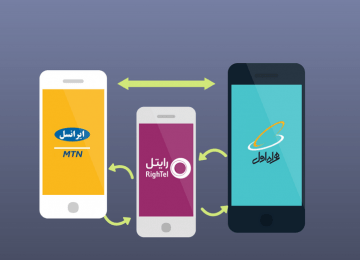
The main mobile phone companies in Iran are MTN-Irancell and MCI (Hamrahe Aval). Tourists and foreigners can buy their SIM card from these operators, which has various and specific offers designed for travelers, and an English language online platform.
You can find an Irancell booth at Imam Khomeini Airport (IKA). The round and yellow counter is easy to find, just after baggage collection.
There are many Irancell shops in every Iranian city: In Tehran, you can find one in Ghaem Building, above Tajrish Bazaar, another one in Imam Khomeini metro station few meters away from Golestan Palace, as well as in many other metro stations and malls. The same goes with Hamrahe Aval, which has several stores in every big city. In Tehran, you can find one near Meydan-e Vali Asr metro station.
What is the procedure to buy a SIM card?
You can buy a prepaid SIM card directly from any Irancell / MCI shop. You will need to register your SIM card at your name, so you must bring your passport with you. That’s the only document required.
Note that it usually takes several hours for the SIM card to be activated. Don’t worry if you regularly receive text messages from Irancell written in Farsi: they are simply ads and discounts.
What are the prices for Internet and phone calls?
Irancell offers 3G and 4G packages and benefits from good coverage all over Iran. SIM card packages with voice call and internet are at the following prices (subject to change):
- 5 GB for two weeks validity = 160.000 rials
- 3 GB for one month validity = 310.000 rials
- 5 GB for one month validity = 460.000 rials
How to charge your cards with more mobile data?
We highly recommend you to download “MyIrancell” application for Irancell and “MyMCI” application for MCI on your phone. With this English language app, you can check how much credit is left on your card.
You can also charge your SIM card online within a few minutes. However, it requires an Iranian credit card to proceed to the payment: you can ask your hotel or your guide to help you with this.
It’s then possible to buy various packages which for Irancell goes from 16.000 rials (one day, 60MB) to 580.000 rials (available three months, 24GB per month).
Should you register your phone while in Iran?
In accordance with the recent legislation, mobiles phones bought outside of Iran must be registered within the country’s telecommunications user database, only if the user intends to stay in Iran more than one month. That’s why tourists are usually not concerned by this rule.
However, if your stay in Iran is superior to thirty days, you will be required to register your phone. Otherwise, after this amount of time, your mobile phone will be rendered unusable in the country. The fees are between 17% to 18% of your cellphone price. The procedure is rather complicated and must be done online on a website which is currently only in Farsi. It’s sometimes possible to have it done in some operators’ shops.
Thus, if you intend to extend your visa and stay for more than one month in Iran, we recommend you to bring a second phone to avoid the registration. You can also use a cheaper phone in which you put your Iranian SIM card, and then use your smartphone for Internet only, by sharing the data (using the personal hotspot functionality).
Public Transportation in Iran; How to Use It?
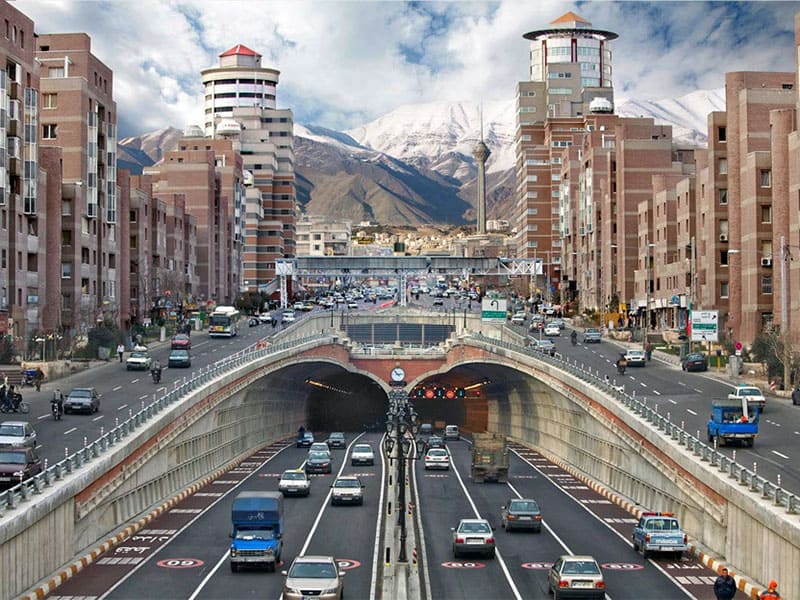
Public transportation in Iran is cheap and efficient, so nothing is simpler than getting around the country on your own. And the way you choose to travel will color your daily experiences on your trip.
Iran has a range of different means of transport that you can use during your vacations. All cities have their own network of buses, and sometimes subway. It’s also very common and easy to take a taxi in Iran. Try a shared one to take advantage of the city like a real local, or enjoy the convenience of a private taxi hailed in the street or booked online.
It’s time to go to the next destination? Take a local “savaris” to reach the small town nearby, or enjoy the comfort of a “VIP Bus” to cover more kilometers. If you prefer to lie down in a real bed and travel during your sleep, do not hesitate: get on board a train! Or maybe you’d better head toward the airport to take a flight: it’s the best choice if you don’t have much time to travel to Iran and nevertheless want to visit many different cities.
So, if you enjoy traveling public transportation and want to use them in the smartest way, don’t miss reading this article!
Take Taxis in Iran
Nothing is easier than getting a taxi in Iran, so it’s often the most convenient way to get around. It’s rather cheap and there is a popular culture of shared-taxi that Iranians use daily. You can find taxis in every city, at any time of the day or the night.
There are several kinds of taxis, whether they are private or shared. Taking taxis in Iran is not only convenient; it’s also a unique experience during your trip, and often an opportunity for nice encounters and chats. But first, introduce yourself to the different options available.
Use Buses and Subways in Iranian cities
Mastering public transportation in Iran is quite easy. It’s a clever way to avoid traffic, and thus saving lots of time… and also money! All cities, from small ones to the capital Tehran, have buses, whether it’s vintage minibusses or modern fast lines.
Five main cities also have a metro network. In Tehran, it’s really convenient and easy to navigate on the five metro lines, which go as far as Karaj and Imam Khomeini Airport.
Travel between cities in Iran via Public Transportation: VIP Buses, Train and Savaris
Traveling on your own, throughout Iran, with public transportation is a piece of cake! There are many options for trains and buses. Those latter are most appreciated by travelers. Indeed, “VIP” buses are extremely comfortable, cheap, flexible and safe! Tickets are easy to book and buses between main cities are numerous each day.
Another option to travel while enjoying the landscape is the train. Even though they are not faster, they offer a highly comfortable trip by day and night.
Travel with Domestic Flights in Iran
If you travel to Iran for a few days, then flying is the best choice for you. Iran is a huge country, three times the size of France for instance. That’s why traveling by plane can be a real time-saver. It’s rather cheap and easy to book tickets for any destination inside the country. Traveling by plane might be the most convenient option for travelers who want to save time. Flights are cheap and almost every destination is reachable by plane, extending the possibilities of your trip.
What to Wear in Iran? A Dress Code Guide for Traveling to Iran
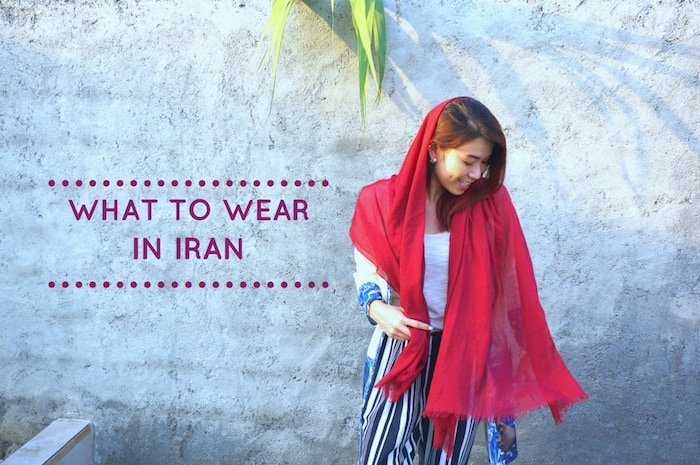
Perhaps one of the most frequently asked questions for travelers before coming to Iran is related to clothing. Here we are about to give you a bit of explanation about the various dress codes in Iran to respect the norm and culture and blend into the background.
We intend to provide you with a what-to-wear guide which will be the most convenient possible, to get ready for your trip. Then, as soon as you step into the country, you can discover a reality that is far from the prejudices and pre-conceived images about clothing in Iran. Indeed, do not expect to see women wearing a burka or black of any kind! On the contrary, be prepared to discover people who deeply love fashion and show endless creativity in clothing.
Ethnically, culturally, and religiously, Iran has various dress codes based on a basic standard. This latter is quite easy: while in public, it is mandatory for women to cover their hair. Clothes are worn a bit loose, and they cover the hands up to the ankles, the arms up to elbows, and are long enough to cover the bottom part. You should also avoid wearing low-cut neckline. However, you can wear opened shoes and sandals. For men, the dress code is easy: the only requirement is not to wear shorts, avoid sleeveless shirts even if T-shirts are accepted. From these simple instructions, women and men are free to apply any modifications to their style, wearing bright colors and different fabrics. Of course, these rules are meant for public spaces. Indoors and between members of the family, people follow their own rules according to their beliefs and comforts.
The capital city, Tehran, is a full showcase of various styles and trends, from strict Islamic clothing to a modern and fashionable way of dressing up. You’ll notice the clothing diversity, their tastefulness and a strong sense of fashion among Iranian women and men. People have been creatively modifying their styles and simultaneously coloring inside the lines. Regardless of each person’s religious beliefs and clothing tastes, people live peacefully alongside each other. Do not be surprised to see an Iranian lady wearing a black chador chatting with a fashionable and on-trend woman in Tehran’s subway for instance. What you witness in Tehran and other big cities is simply reflecting the international trends in terms of color, textile design, and clothing style modified ingeniously to be fit the country’s clothing rules and regulations.
The story might be a little different in smaller and more religious places. In cities such as Qom, Hamadan, Kashan, and Qazvin, aside from their local and traditional costumes, dress codes are slightly different and people dress more conservatively. It will catch the attention of the locals if one keeps a really modern and trendy clothing style, as it’s different from what they are used to see every day, However, there are no specific concerns to have regarding these places, as people always show a great tolerance toward the visitor.
Here are some extra handy tips from experienced local women to the first time travelers to Iran:
- As a foreigner, no one expects you to cover like a Muslim born. So if the shawl or scarf falls down from your head, no need to panic! Simply put it back on, and no one will feel offended. To feel more comfortable, you can use a hairband over your shawl, it will prevent it from falling down.
- You don’t need to cover your hair entirely and you can even wear a fringe. Most Iranian ladies have the front part of their hair uncovered and usually, wear their shawls over the head loosely.
- Remember that as a tourist, locals will always be tolerant toward you and forgive you a potential fashion faux pas.
- Piercings and tattoos are neither uncommon nor mainstream in Iran. If you have some unusual and visible ones, you don’t need to hide them. In big cities, they will probably be unnoticed, while in smaller ones they can sometimes arouse a benevolent and amazed curiosity from locals.
At last, don’t worry if you could not pack the proper suit to fit Iran’s dress code before departure. Once in Iran, you can find anything you want to wear in any bazaars or modern shops in the cities. While intimidating at the beginning, clothing rules in Iran are rather simple and flexible. The best way to figure it out is to come and see it by yourself. Meanwhile, we hope that this guide has been helpful in order to clear up some doubts you might have had regarding what to wear in Iran.